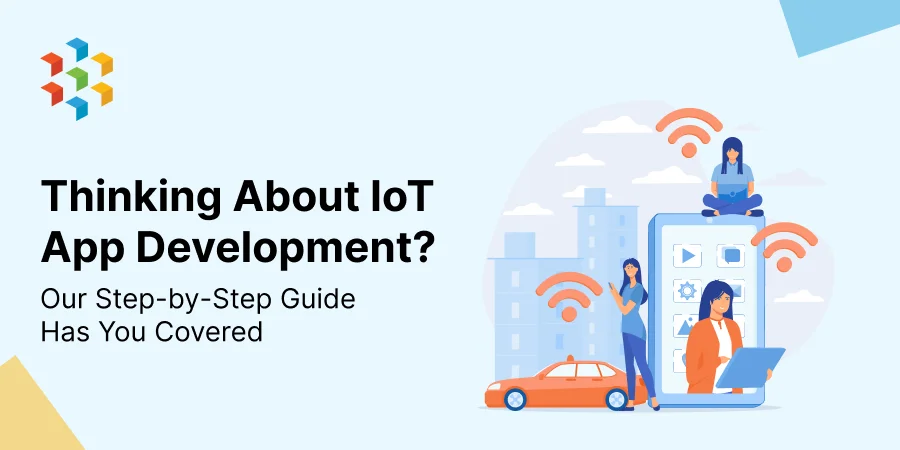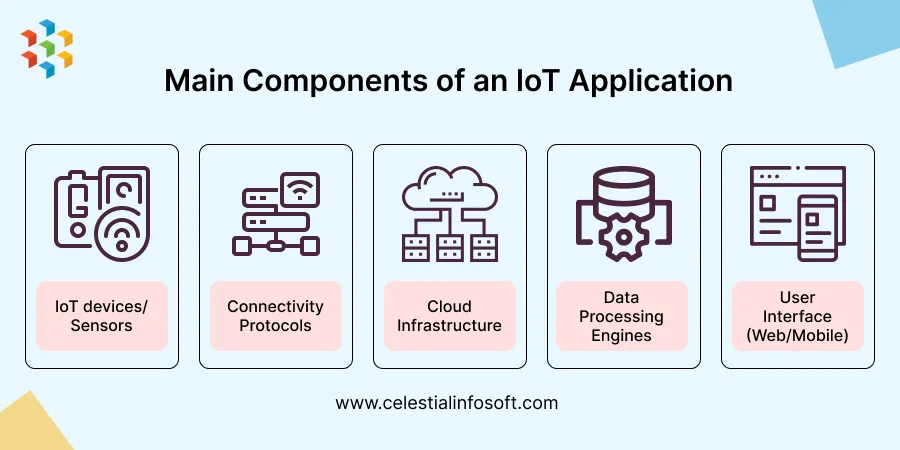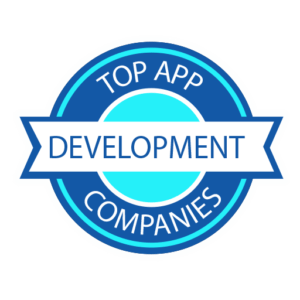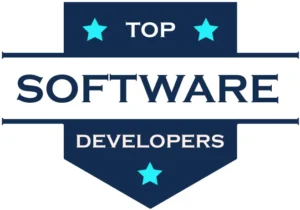
Table of Contents
One of the most disruptive technologies in the quickly changing digital landscape has been IoT (Internet of Things). No longer is connecting devices the focus; it’s now about creating seamless ecosystems for fostering automation, efficiency, and data-informed business decisions. Startup or large multinational, IoT app development offers vast opportunity for liberating innovation in business.
We will delve into all there is to learn about building IoT apps, architecture through real-world applications, and how to set about creating a rock-solid implementation in this comprehensive guide.
What is IoT Application Development?
The development of IoT applications refers to the creation of software products that connect physical devices (such as sensors, appliances, or machines) with digital platforms to exchange and process data. Such applications enable users to observe, manage, and automate systems within various business areas, including healthcare, intelligent cities, logistics, manufacturing, and home automation.
Main Components of an IoT Application

Successful implementation of IoT typically includes:
- IoT devices/Sensors – These collect data from the environment.
- Connectivity Protocols – Information is transferred using Wi-Fi, Bluetooth, LoRaWAN, Zigbee, or cellular networks.
- Cloud Infrastructure – A secured environment where the data is processed, analyzed, and stored.
- Data Processing Engines – Interpretation and cleaning software for data.
- User Interface (Web/Mobile) – Interface through which people operate devices.
For instance, Celestial Infosoft’s IoT Software Development services are well-versed in converging the above-mentioned elements for industrial applications on a large scale.
Step-by-Step Approach to IoT App Development
1. Set the Business Objective
Start by clearly stating the problem you’re solving. Aiming to maximize logistics? Automate home systems? Optimize manufacturing production? That provides direction on device selection, architecture, and UX.
2. Choose the Right Hardware
Choose sensors and edge devices by the conditions in the environment and the needs for the data. You need compatibility and reliability for this. Your equipment should complement the app’s performance and communications objectives.
3. Create a Scalable Architecture
Design the future growth system. Cloud platforms including AWS IoT Core, Google Cloud IoT, and Azure IoT are providing scalability, real-time analysis, and efficient device management.
4. Utilize Edge Computing
Reduce latency and enable a faster response by moving computation closer where the data is being generated. This is especially true for time-critical applications like traffic systems and healthcare monitors.
5. Prioritize Security
Security is a requirement. Encrypt device communications, authenticate users and provide regular updates for the firmware. There are real cybersecurity threats out there, and your app needs to safeguard user data and infrastructure.
6. Develop User-Friendly Interfaces

Create user-friendly and responsive UIs with real-time control and feedback. Whether it is a mobile app for a fleet of logistics vehicles or a home automation dashboard, adoption is driven by usability.
7. Test and Iterate
Test rigorously for performance, security, and usability. Obtain real-user feedback and release the application regularly in increments to add more functionality.
Real-World IoT Application Case Studies
- Fleet Management: A US logistics company redeveloped their old software into a real-time GPS and breakdown management system, improving the efficiency of operations. Research the project.
- Smart Homes: From lighting to thermostats, our unified solution enabled remote monitoring and automations with energy savings. Follow the way we created it.
Challenges in IoT Application Development
- Device Interoperability: Interconnecting devices from different vendors could pose complexity.
- Data Overload: IoT devices generate massive data. Handling the data in real-time is critical.
- Security Risks: Data breaches and unlawful access can compromise the entire network.
- Scalability: With the rising number of device connections, performance maintenance is an issue.
Working with an experienced IoT consulting and development partner like Celestial Infosoft ensures that such hurdles are addressed ahead of time.
Why Invest in Custom IoT App Development?
Each business has unique needs, and commercially available IoT platforms might not meet them. Custom development enables you:
- Tailor solutions to precisely suit your process.
- Mix legacy systems and proprietary hardware.
- Retain the rights in your intellectual property.
- Build secure and compliant infrastructures.
If you’re a service provider, a logistics company, or a home automation pioneer, our IoT Consulting Solutions can guide the development of your strategy and deliver with accuracy.

Future of IoT Apps
As the world witnesses the rise in the integration of AI, 5G networks, and edge intelligence, IoT app prospects look promising. The future holds more predictive capabilities, self-ruling device management, and more energy-efficient ecosystems. IoT business investments today by companies will lead the way towards smarter business in the coming years.
Final Thoughts
Development of IoT applications is more than just a technology trend; it is a strategic business investment generating tangible ROI in the form of automation, real-time decision-making, and enhanced user experiences. We at Celestial Infosoft help in developing IoT applications that are scalable, secured, and aligned with real business objectives.
Ready to realize your vision as an IoT product or service?
📍 Explore Our IoT Services | 📩 Consult with Experts
Let’s build something smart, together.

